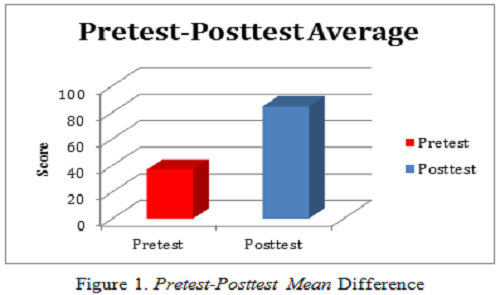
Effectiveness of Integrated PowerPoint-iSpring Multimedia Prompting Questions on Learning Electrolyte and Nonelectrolyte Solutions Based on Guided Discovery Learning on the Learning Outcomes of Class X High School Students
Abstract
Keywords
Full Text:
PDFReferences
Anggriawan, B., Effendy, E., & Budiasih, E. (2017). The Effectiveness of Using Guided-Discovery Learning-Based Interactive Multimedia in Developing Students' Understanding of Molecular Symmetry Materials. Research Reports.
Daryanto. (2010). Learning Media. Bandung: One Nusa
Guspatni, G., Andromeda, A., & Bayharti, B. (2018). Improvement of Answering Activities and Quality of Student Answers with Prompting Questions in Chemistry Learning Strategy Course. JOURNAL OF EDUCATION EXACTLY (JEP), 2(1).
Hake. (1999). Analyzing Change/ Gain Score. USA: Indiana University
Hernawati, K. (2010). Ispring Presenter Training Module. Module (online) , (http:/stafnew. uny. ac. id/uploud/132309677/pengabdian/modul-ispring-presenter. pdf) .
Jalinus, N., and Ambiyar. (2016). Media and Learning Resources. Jakarta: Kencana.
Jansoon, N., Coll, R. K, & Somsook, E. (2009). Understanding Mental Models of Dilution in Thai Students. International Journal of Environmental and Science Education , 4(2), 147-168.
Langitasari, I. (2016). Analysis of Multi-Level Initial Ability Representation of Level I Students on the Concept of Redox Reactions. EduChemia (Journal of Chemistry and Education) , 1(1), 14-24.
Latisma Dj. (2011). Educational Evaluation . Padang: UNP Press
Markaban. (2008). Guided Discovery Model in Vocational Mathematics Learning . Yogyakarta: Ministry of National Education PPPG.
Noer, J., Kresnadi, H., & Halidjah, S. (2017). The Use of Ispring 7.0 Program in Mathematics Learning to Improve Learning Outcomes of Class V Students. Journal of Equatorial Education and Learning , 6(12).
Permendikbud . ( 2014 ). Regulation of the Minister of Education and Culture of the Republic. Indonesia Number 57 of 2014 concerning the 2013 School Curriculum
Culture Regulation. (2018). Regulation of the Minister of Education and Culture No. 37 2018 regarding KI and KD for elementary, middle and high school levels 2018
Pooroe, K., Hamid, F. A, & Unwakoly, S. (2020). The Use of Media Ispring and Power Point in Sub-Concepts of Basic Laws of Chemistry to Improve Learning Outcomes of Class X Students of SMA Negeri 7 Ambon. Science Map Journal , 2(2), 90-94.
Priyanto, D. (2009). Development of computer-based learning multimedia. INSANIA: Journal of Alternative Educational Thinking , 14 (1), 92-110.
Saputri, Y. G, & Guspatni, G. (2021). Validity and Practicality of Integrated PowerPoint-iSpring Learning Media Prompting Questions on Materials of Electrolyte and Nonelectrolyte Solutions for class X SMA/MA. Enthalpy of Chemical Education , 2 (1), 57-65.
Sugiyono. (2010). Educational Research Methods Quantitative, Qualitative, and R&D Approaches . Bandung: Alphabeta
Sumarniti, N. N, Arcana, I. N, & Wibawa, I. M. C. (2014). The Influence of Guided Discovery Learning Model on Science Learning Outcomes in Grade V Students at SD Cluster VII, Sawan District, 2013/2014 Academic Year. MIMBAR PGSD Undiksha , 2(1).
Yerimedisi. (2017) . Book Guided Discovery Learning Model for High School Chemistry Learning (GDL-PK). Padang: Padang State University. https://doi.org/10.31219/osf.io/gkmt6
DOI: http://dx.doi.org/10.31258/jes.6.4.p.603-612
Refbacks
- There are currently no refbacks.
Copyright (c) 2022 Rani Mayresta

This work is licensed under a Creative Commons Attribution 4.0 International License.
Publisher: FKIP Universitas Riau












